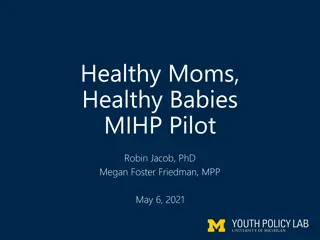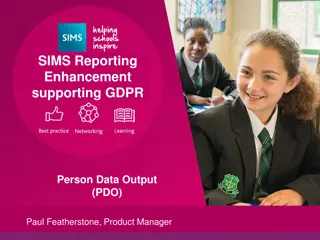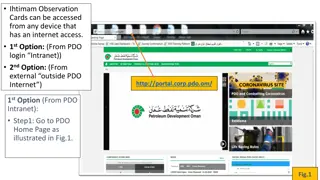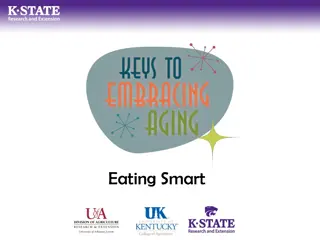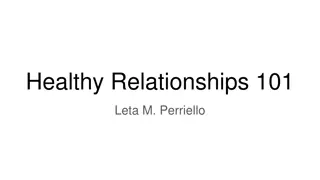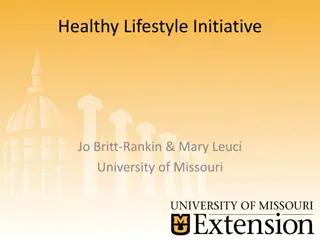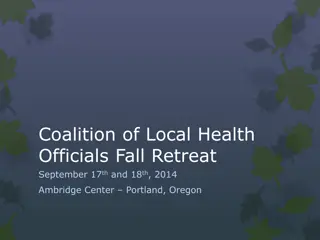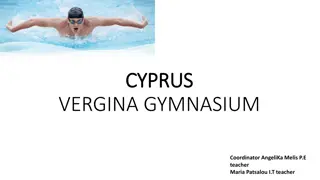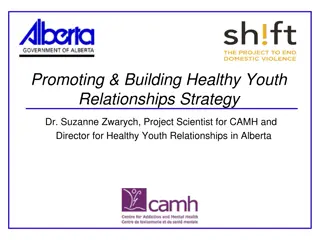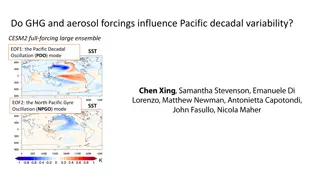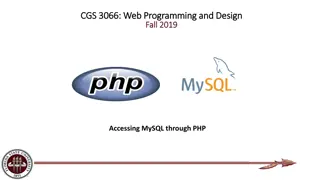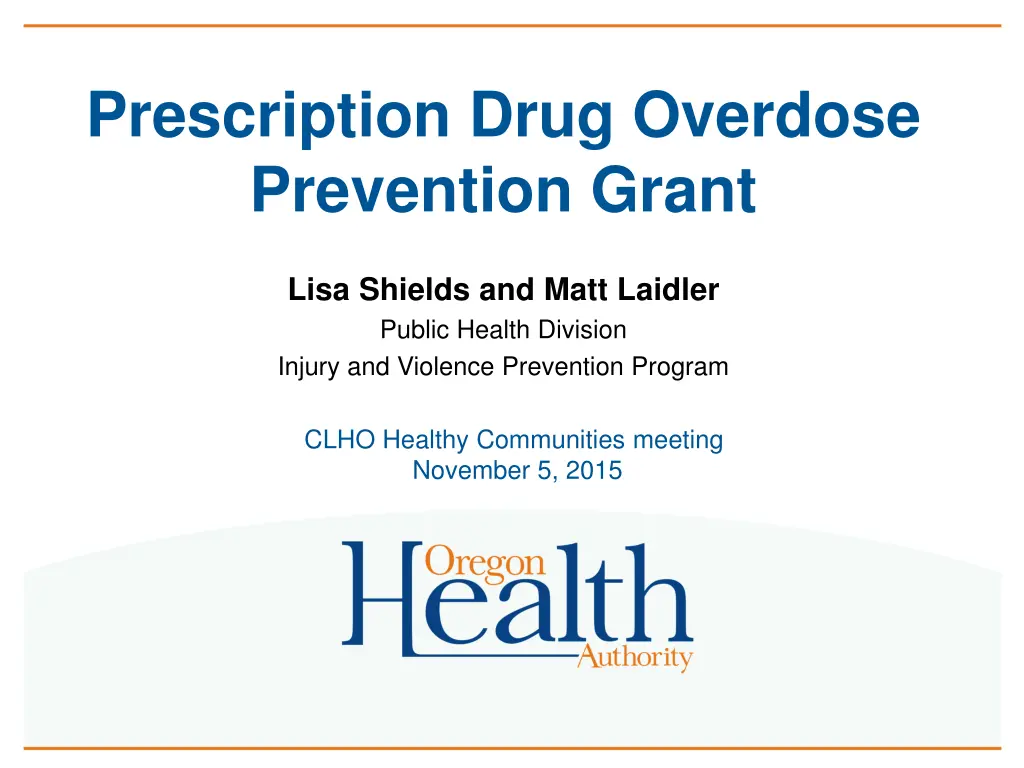
Prescription Drug Overdose Prevention Grant in Oregon - CDC Initiative
Explore the comprehensive efforts in Oregon to address prescription drug overdose through the CDC Prevention Grant. Learn about the program, statistics, key areas of focus, and strategies implemented to prevent opioid-related deaths and promote public health and safety from 2015 to 2019.
Download Presentation

Please find below an Image/Link to download the presentation.
The content on the website is provided AS IS for your information and personal use only. It may not be sold, licensed, or shared on other websites without obtaining consent from the author. If you encounter any issues during the download, it is possible that the publisher has removed the file from their server.
You are allowed to download the files provided on this website for personal or commercial use, subject to the condition that they are used lawfully. All files are the property of their respective owners.
The content on the website is provided AS IS for your information and personal use only. It may not be sold, licensed, or shared on other websites without obtaining consent from the author.
E N D
Presentation Transcript
Prescription Drug Overdose Prevention Grant Lisa Shields and Matt Laidler Public Health Division Injury and Violence Prevention Program CLHO Healthy Communities meeting November 5, 2015
Topics covered The burden of prescription drug overdose Overview of the CDC Prevention Grant for States Plan and selection process for regional funding Program element and next steps 2
Prescription Opioids: The Problem In Oregon, over 2,400 people have died from overdoses associated with prescription opioids since 1999 Results from the 2012-2013 National Survey on Drug Use and Health tie Oregon for 2nd place among all US states in non-medical use of prescription pain relievers In 2013, 3.6 million prescriptions for opioid painkillers were dispensed in Oregon, enough for 925 opioid prescriptions for every 1,000 residents in that year alone 3
CDC Prevention Grant Oregon is one of 16 states selected for CDC Prescription Drug Overdose: Prevention for States funding for 2015-2019, to advance prevention in four key areas: Enhancing and Maximizing State Prescription Drug Monitoring Programs (PDMPs) Implementing Community or Insurer/Health Systems Interventions Conducting Policy Evaluations Developing and Implementing Rapid Response Projects 4
Driver Diagram: PDO Prevention, 2015 - 2019 PrimaryDrivers Aim Secondary Drivers Implement opioid prescribing guidelines for pain management Engage CCOs, Emergency Departments, health systems, and insurers to expand uptake and use of evidence-based opioid prescribing and management guidelines Fund five high- burden county regions to form and convene regional pain guidance groups (PGGs) and interdisciplinary action teams (IATs) to expand uptake of model opioid prescribing guidelines Increase the number and geographic distribution of physicians certified to provide MAT Reduce problematic prescribing practices Increase access to and reimbursement for non- opioid treatments for chronic non-cancer pain Provide reimbursement for non-opioid pain treatment therapies Require insurers to pay for non-opioid care for chronic non-cancer pain treatment Encourage CCOs and other prescribers to increase the use of non-opioid pain management Reduce deaths, hospitalizations, and emergency department visits related to drug overdose Provide Medication Assisted Treatment (MAT) for opioid use disorder Increase access to naloxone Establish a standing order for Naloxone distribution at pharmacies Increase access to Naloxone through community-based programs Include co-prescribing of naloxone in model guidelines when prescribing opioids for at-risk patients Increase and improve the infrastructure of naloxone rescue Enhance and maximize the Oregon Prescription Drug Monitoring Program (PDMP) Reduce barriers and increase PDMP registration and use Reduce data reporting interval Increase PDMP reporting, surveillance, and data sharing Establish messaging to PDMP users Authorize PDMP to share identified data with researchers, public health, and health systems Use data to target interventions to populations at highest risk Evaluations of policy and programs Staff Evaluate the public health impact of removing methadone as a preferred pain treatment drug from the state Medicaid drug formulary Evaluate the impact of 72-hour or real time PDMP reporting Katrina Hedberg, State Health Officer Lisa Millet, Principal Investigator Lisa Shields, Program Coordinator Matt Laidler, Research Analyst Josh van Otterloo, Research Analyst
State hot spots Aim: fund five high- burden county regions to form and convene regional pain guidance groups (PGGs) and interdisciplinary action teams (IATs) to expand uptake of model opioid prescribing guidelines Jim Shames and Laura Heesacker (Jackson County) are consultants for this effort
Funding for 5 regions Years 1-2 Multnomah, Clackamas, Washington Lane, Douglas Coos, Curry, Josephine Years 3-4 Clatsop, Tillamook Lincoln, Linn, Benton
Selection Index measure/composite score of 5 factors: 1) county rate of opioid overdose death, 2) county rate of opioid overdose hospitalization, 3) rate (per 1,000 residents) of prescribing for all opioids, 4) average # patients per month with > 100 MED prescriptions, 5) county population Factors weighted according to importance for reducing aggregate overdose rates and problematic prescribing rates Counties were assigned points by their rank of these factors (e.g. the county that had the highest overdose death rate received 25 points, the next highest, 24, etc.) Composite score = averaged county factor scores across five factors [no single factor alone disproportionately contributed to composite score]. Selected counties are a mix of large and small (population), but each with sizable overdose and/or problematic prescribing rates
Program Element highlights $95,500 annually to hire a PDO coordinator who will Work with local health care providers, CCOs, health systems, and other agencies and organizations to build infrastructure for a community network within the region Form and convene an Interdisciplinary Action Team (IAT) and a regional Pain Guidance Group (PGG) Coordinate an annual regional PDO symposium Undergo PDMP training to promote regional prescriber uptake IVPP will provide quarterly PDMP data dashboards to counties
Next steps Form work group to review and edit the draft Program Element December 3 present revised PE to CLHO Healthy Communities for support and recommendation December 17 present an overview of the grant and program element at Big CLHO meeting December 18 The approved PE will be sent to OHA Contracts for processing. PE included in the December or January amendment
Contact Information Lisa Shields Lisa.m.shields@state.or.us Matt Laidler Matthew.laidler@state.or.us Lisa Millet Lisa.m.millet@state.or.us 12


